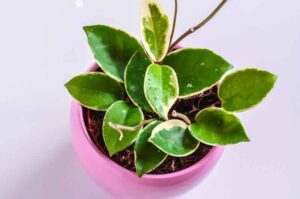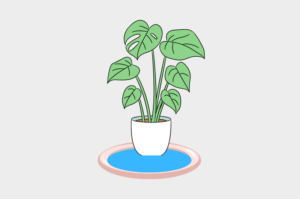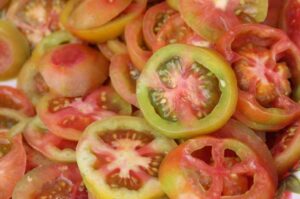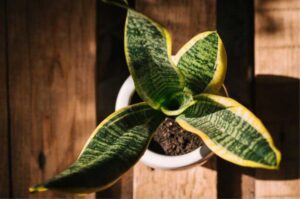Why Is My Watermelon Peperomia Leaves Curling?
Watermelon Peperomia belongs to one of the most wonderful and versatile plant groups which are generally pretty easy to keep alive and happy. However, this attractive foliage has some drawbacks where it sometimes becomes curled, yellow, or drooped. In this article, we will discuss all the causes of why your Peperomia leaves are curling and how to fix them.
Your Watermelon Peperomia leaves are curling mostly due to these reasons:
- Underwatering
- Light and temperature stress
- Calcium deficiency
- Stress from repotting
- Overwatering
- Pest infestation
When underwatered, Watermelon Peperomia leaves get dehydrated and curl to reduce transpiration, to prevent further water loss. However, reasons like excess watering, high temperatures, low humidity, over-fertilization, and root rot can also cause leaves to curl.
If you see some of your Watermelon Peperomia leaves curling or becoming wrinkled, you might need to change the care routine for your Peperomia. However, you need not worry because curling leaves on Peperomia or moderate wrinkles are not a serious threat or major issue of concern most of the time. Some minor adjustments in your care routine will take the plant back to health.
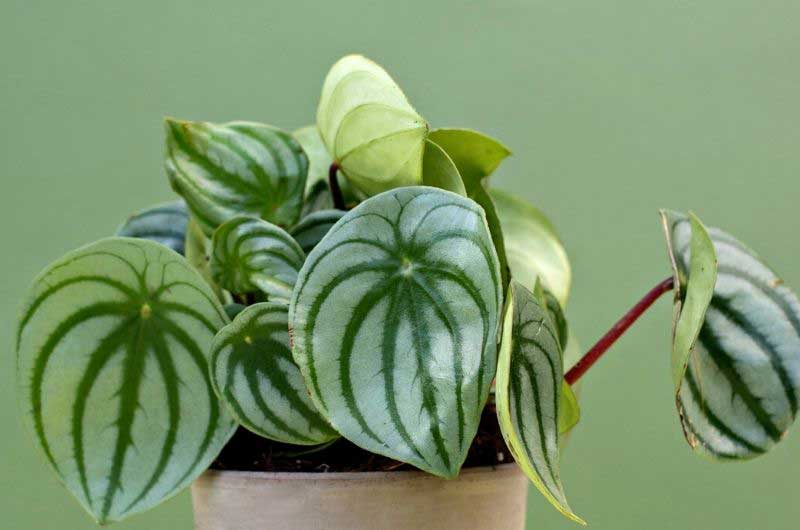
Causes Of Watermelon Peperomia Leaves Curling
Here is a list of all the causes for which your Watermelon Peperomia leaves are curling, along with their solutions.
Underwatering
The thick succulent-like leaves and stems of Watermelon Peperomia are good at retaining water. Hence, compared to other houseplants like Monstera, they do not require much watering.
In general climate and temperature, watering your Watermelon Peperomia every two weeks is more than sufficient.
However, if the plant goes without water for too long, the leaves will start to curl inward to close their pores thereby reducing the surface area through which moisture escapes (Transpiration).
Identifying Underwatered Watermelon Peperomia
In addition to curling leaves, the dehydrated Watermelon Peperomia plant will have dry soil, sagging stems, and yellowing, crispy leaves. If you find any of these signs in your plant, it may indicate that your Peperomia needs watering.
Check If Your Soil Is Dry:
Use the finger digging method. Stick your finger 2 inches into the topsoil to see if moisture is present. If you see that your finger is coming out clean, the soil is dry and you have to water it.
The alternative method is to use a moisture meter to get an accurate reading of the moisture level of your soil.
How To Fix Underwatered Watermelon Peperomia:
Even if your plant is underwatered, there is no need to worry since rehydrating a Watermelon Peperomia plant is pretty easy. All you have to do is soak the plant in a container filled with room temperature water for about 30 minutes, or until you see the soil expand and moist.
After that, remove the pot from the container and allow the excess water to drain through the drainage holes of the container for about half an hour. By doing this, your Watermelon Peperomia plants should recover in 24 hours with everything done correctly.
If this process fails there is a good chance that your soil is hydrophobic, meaning it drains water quickly without letting the plant wet. Check out this article on How to make the perfect potting soil for indoor plants.
Light And Temperature Stress
Temperature Stress or heat stress is a very common reason for your Watermelon Peperomia to curl. The ideal temperature of Peperomia is between 60°F to 80°F (15⁰C – 27⁰C). Make sure to keep Watermelon Peperomia away from direct sunlight.
If the temperature rises over 90°F (32⁰C), soil moisture will start to evaporate rapidly ceasing the availability of the required amount of water to plants.
In this case, you will need to water your Watermelon Peperomia more frequently to save it from experiencing drought. These signs are similar to dehydrated plants, including curling leaves.
Identifying Heat Stress On Watermelon Peperomia
While you might think dry soil is a result of dehydration, don’t overlook the option of heat stress.
If your plant is experiencing temperature stress, with time it will droop and the leaves will curl in order to prevent transpiration and protect the plant from further moisture loss.
Long-term exposure to high temperatures will cause the leaves to turn brown, dry, and brittle. It may also develop scalded leaves. This is why exposure to direct sunlight is bad.
How To Treat Temperature Stress Plant
Immediately bring your Watermelon Peperomia indoors if you notice any of the above-mentioned signs. The best place to keep it is in a shaded area, away from direct sunlight.
Block harsh sunlight at the place where your plant is kept. Deepwater your plants if the topsoil of your plant becomes dry and use coco pits to cover the soil to decrease evaporation.
Lastly, if you use heavy fertilizers, control that as it would cause the stems and the leaves to outgrow the development of the root system putting it in additional stress.
Calcium Deficiency
One of the rare cases that are missed out by most owners that causes their Watermelon Peperomia leaves to curl is nutrient deficiency, specifically calcium deficiency.
Calcium maintains the sturdiness and the rigidity of the plant cell walls. If the Calcium absorption is insufficient, growth will be stunted, and the young new leaves will start to curl downwards.
Identifying Calcium Deficiency In Watermelon Peperomia
If you see your Watermelon Peperomia has stunted growth with deformed and small new leaves, it is due to nutrient deficiency. There will also be brown chlorotic spots appearing along the leaf margins, that eventually spread all across to the center of the leaf.
How To Save Nutrient Deficit Watermelon Peperomia
The use of natural fertilizers like lime and eggshells will help to add calcium to the potting soil of your plant.
If you are using eggshells, crush them in a blender and sprinkle them above the soil covering them. Then water the soil thoroughly to make it absorb all the calcium.
An alternative solution is to use a balanced fertilizer every two weeks ensuring that your plant receives all of the nutrients it needs for growth. To avoid over-feeding by diluting the fertilizer with water to reduce its strength.
Repotting Stress
Repotting shock is a common reason for the stunted growth of your Watermelon Peperomias. If you notice the leaves of your Watermelon Peperomia curling after you have recently repotted the plant, it is due to repotting stress.
Many factors can induce repotting shock such as a change in soil type, change in lighting, or if the roots are exposed to air for too long.
Identifying Repotting Stress On Watermelon Peperomia
If your plant is experiencing repotting stress, the leaves of the plant will turn yellow and start to wilt besides curling.
How To Save Peperomia From Transplant Shock?
To save your plant from repotting stress, you need to provide ideal care to the plant. you can check this article on how to care for Peperomia plants to know what exactly you need to do.
Apart from that, just make sure that the new soil drains effectively provide appropriate watering during recovery. By using root hormone, you can increase root development and get a healthier plant.
If you provide your plant with proper care, your Watermelon Peperomia should get over its shock in about a month.
Overwatering
Similar to underwatering, overwatering can also lead the leaves of your Watermelon Peperomias to curl. However, it might not be a direct cause but overwatering will kill your plant.
Several causes can lead to overwatering such as too frequent watering, using poorly draining soil, etc. This will cause the roots to get wet and become waterlogged, eventually leading to root rot.
With rotting roots, the plant is unable to absorb water and nutrients from the soil sufficiently. This causes overwatered Watermelon Peperomias to show symptoms of drought or nutrition deficiency.
Identifying Overwatered Peperomia
Initially, the leaves of your plant will turn upwards and start browning. The leaves will start to feel soft, limp, and start turning yellow.
Test your soil to see if it is wet, not moist but wet even after not watering for two weeks. Another major symptom is a foul odor coming from the soil.
Lastly, if you remove the plant from the pot, notice if the roots have turned black and mushy. That is the most definite indicator of root rot.
How To Fix Waterlogged Peperomia
To fix overwatering, stop watering the plant if you see it is moist. Use the finger digging method to know if you should water the plant.
Allow the roots to be spacious for the passage of air and the soil of the plant must have well drainage.
Cut off the black mushy roots and use 3% hydrogen peroxide to kill the pathogens before you plant them in fresh, new soil.
Pest Infestation
Even though not a lot of pests usually attack Watermelon Peperomias, spider mites- which do are a big threat.
Spider mites tend to suck out the plant sap leaving yellow patches on the leaves.
If not attended to in time, these plants are more likely to die.
How To Avoid Pest Infestation On Watermelon Peperomia?
The first thing you must do is keep the plant free of dust and pests. Clean both sides of the leaf with a damp cloth. This will help you detect the infestation at an early age.
Neem oil is an excellent natural pesticide for preventing disease. However, it will not help your plants to recover. You can apply needed oil on your plant once a week either by spraying or by applying it with a cotton swab on each side.
Spider mites are common in nurseries, so your new plants might to infected. Since this pest infestation spreads like fire, quarantine your newly bought plant and monitor it at least for a month before exposing it to other plants.
How To Repot Your Watermelon Peperomia Plant?
If you want to rectify yellowing, drooping and falling leaves caused by root rot, fungus gnat larvae, or if your plan is rootbound, repotting them is a great solution. With repotting, you can remove any damaged roots and transfer the plant into better-quality soil.
You should generally repot your Watermelon Peperomia plants after two or three years. This is because, the potting soil gets compacted with time, making the plant more prone to root rots.
Another benefit of Watermelon Peperomia plants is, they do not grow much, hence, you would not necessarily have to repot the plant into a bigger container.
The repotting process is as follows:
- Fill a new pot halfway with well-drained soil. Use a combination of equal parts of peat moss and perlite.
- Carefully remove the plant from the container. Shake off all of the excess soil on the roots.
- If you tend to overfertilize your plant, hose the roots.
- If you see any damaged roots, cut them off
- Place the plant in the middle of the new pot and start covering the roots with a fresh soil mixture.
- After you have covered all the roots, press it to make it firm.
- Water the plant thoroughly.
Why Are My Watermelon Peperomia Leaves Getting Yellow?
There is nothing to worry about if you notice old leaves turning yellow and withering. If it looks unattractive, you can always pinch off the leaves.
However, excessive yellowing of your Watermelon Peperomias might have some underlying causes which must be found. It can be a sign of problems like excess sunlight, improper watering, or nutrient deficiencies.
Peperomia plants are fond of indirect light. Too much exposure to bright direct light can cause the leaves of your plant to fade and have burnt patches at the tips and edges. If your plant is yellowing due to excessive sunlight, reposition the plant to solve the problem.
Another reason that can cause your plants to get yellow is nitrogen deficiency. You can apply diluted liquid fertilizer every month to take care of yellowing brought by nutrient deficiencies.
Final Words
To conclude, watering is the most important thing you need to care for if you don’t want your Watermelon Peperomias to curl. Other problems affecting Watermelon Peperomia such as pests and diseases, temperature, humidity, light intensity, and fertilizer application must also be looked after.
In this article, we have comprehensively described each cause and how to fix it. Consequently, humidity, adjusting temperature, and fertilizer dosage will easily solve all your Peperomia problems.
To stop disease, Neem oil and insecticidal soaps will help you get rid of mealybug and fungus gnat infestations, while aggressive pruning of the affected leaves will stop the spreading of the disease.
Finally, to give your Watermelon Peperomia one last chance at fighting, change the soil entirely and allow the plant to make a new start.

